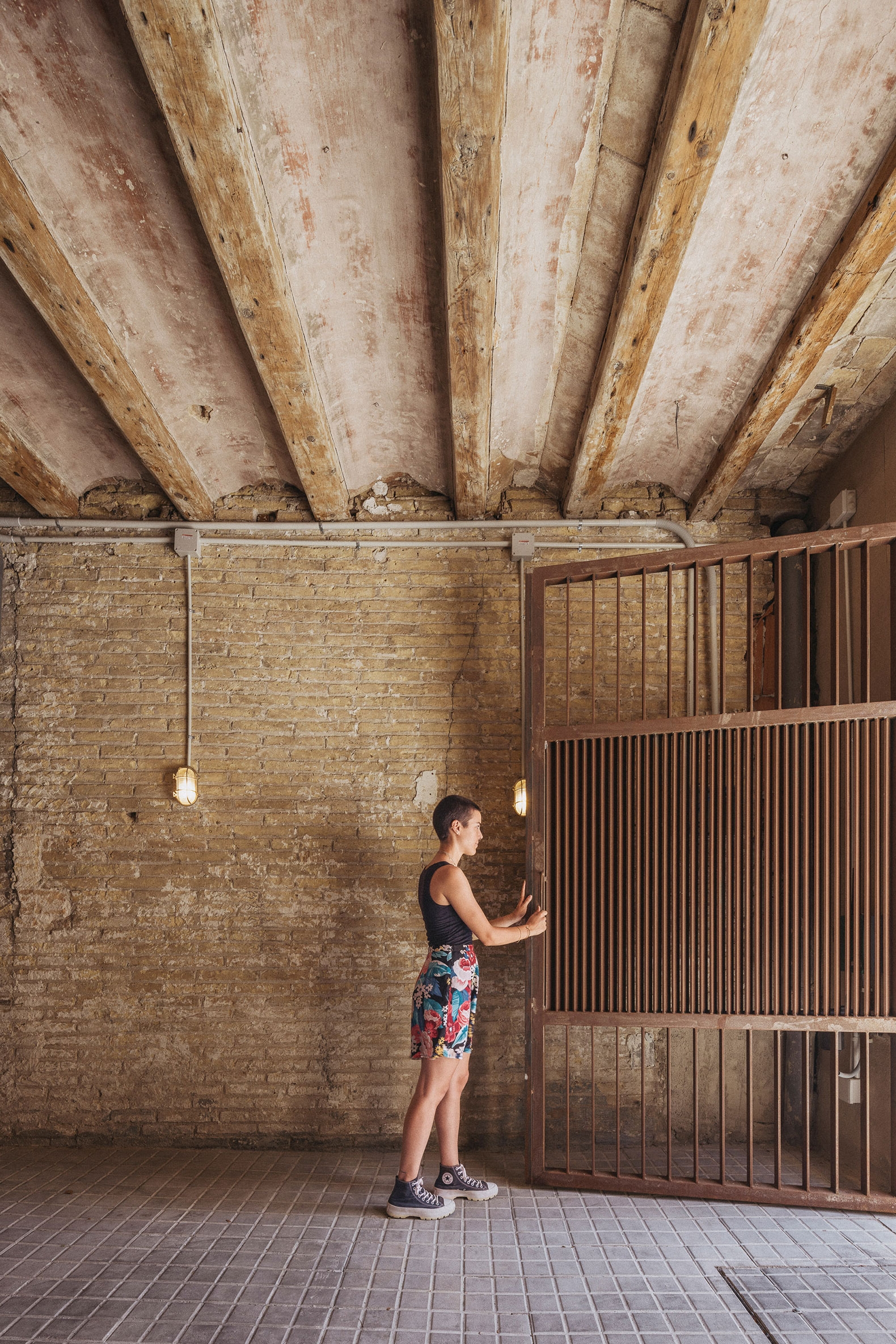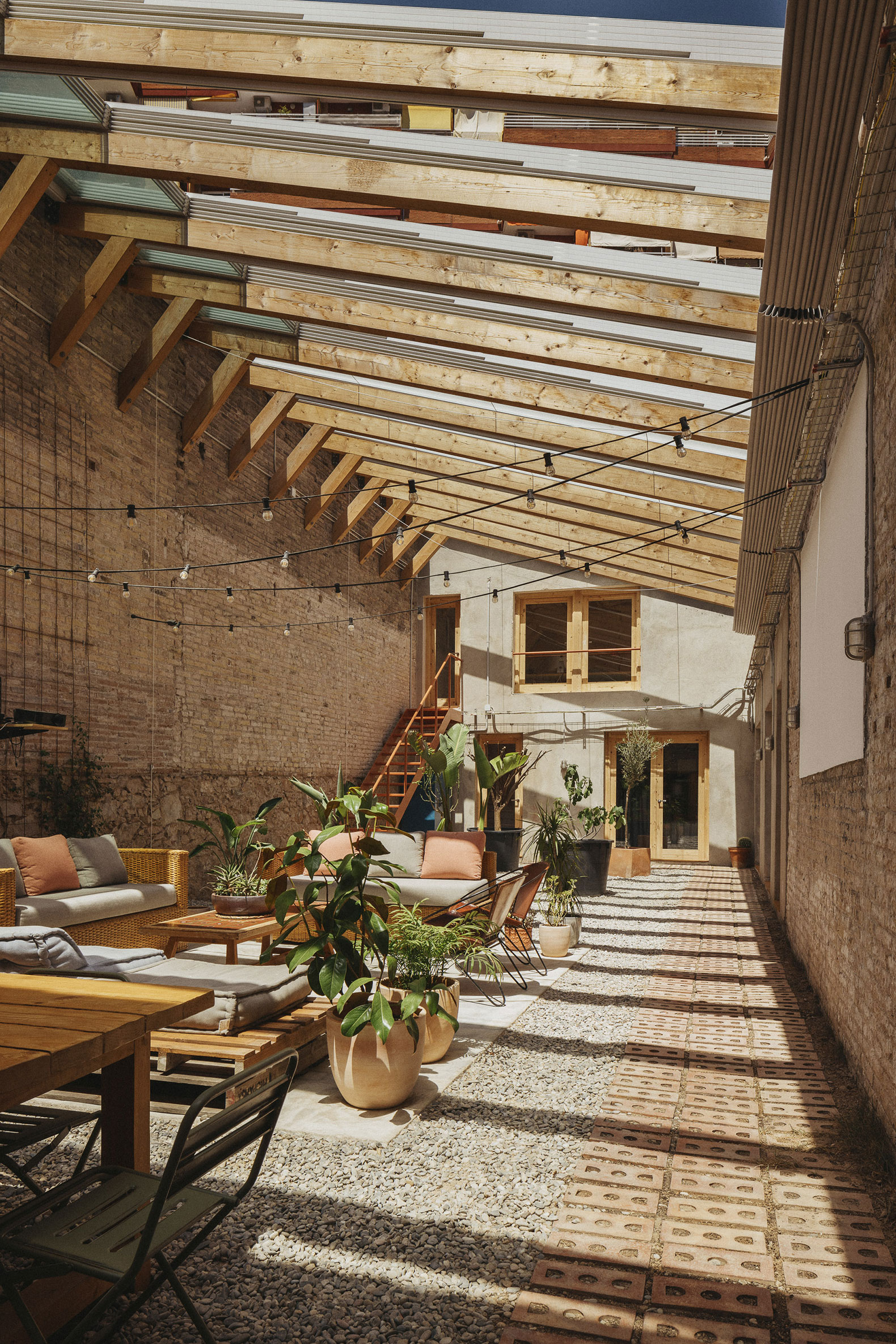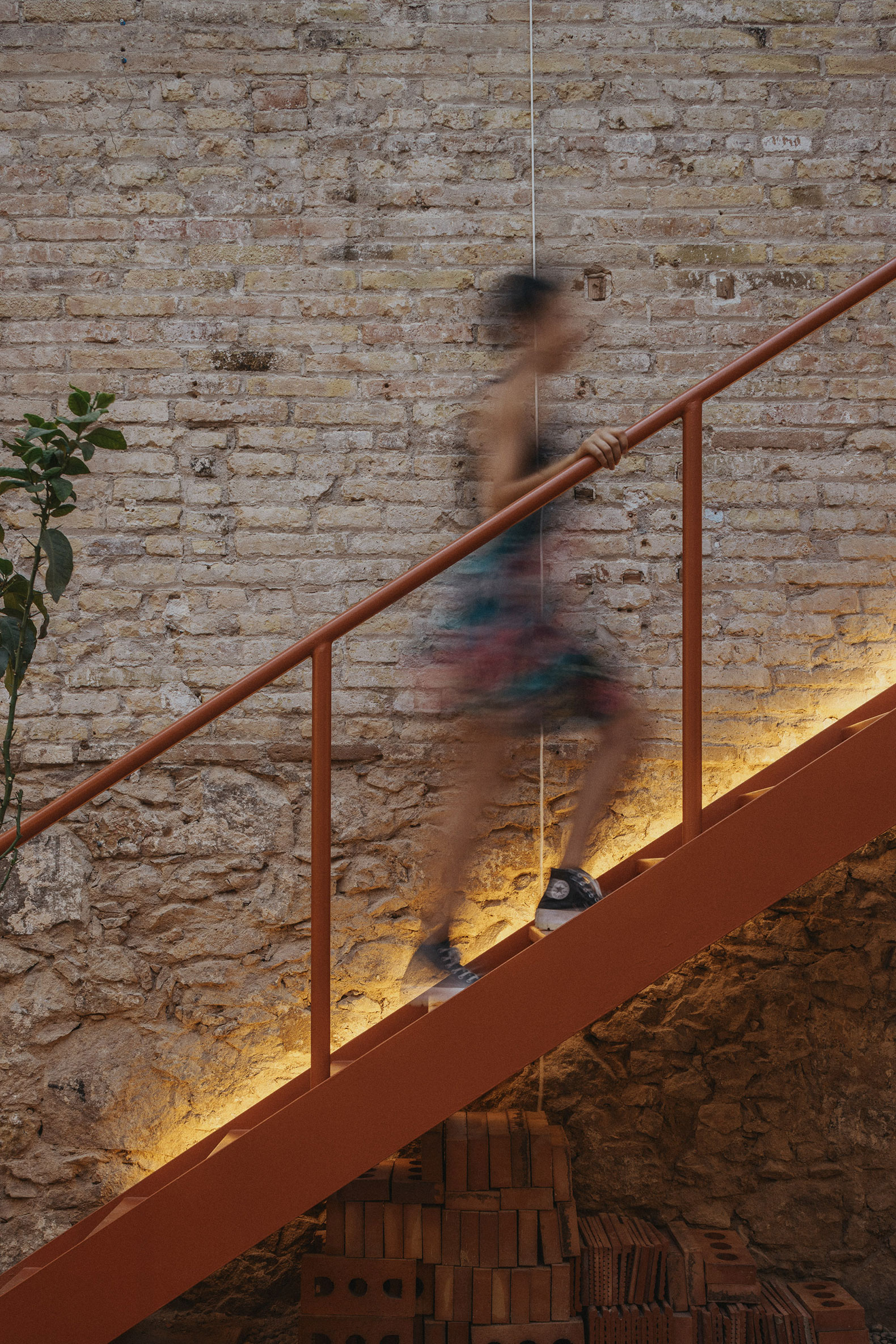The rehabilitation creates a mixed space, which knows how to respect the pre-existence, where you can live and work, thanks to the creation of a green lung as a central nucleus that works as a thermoregulatory space, a space that functions as a porch, patio, garden and living room. be merged into a single space with a retractable glass cover for ventilation. The program follows the types of Mediterranean domus and organizes the rest of the house around this space which provides good ventilation, direct light, and a temperature regulated by this large garden.
The materials used are local materials, such as glazed ceramic, clay, wood, or concrete, whose use leaves the memory of the building present, the architectural traces that speak for themselves.

Oasis House by MARBÄ architecture. Photograph by Alejandro Gómez Vives.
Project description by Júlia Marbà Prats
Oasis is the name of an architectural project, but it comes from a research process to create a green and sustainable space with the highest quality of life possible in one of the densest cities in Spain and Europe.
This project is located on the ground floor of a residential block. In the beginning, it was a parish, later a printing press, and finally a bazaar. The first time I visited it, the distribution and products from the bazaar were still there. The challenge was immense.

Oasis House by MARBÄ architecture. Photograph by Alejandro Gómez Vives.
The objective of the project was to transform this ground floor into a mixed space to be able to live and work. Another plus was obtaining a high energy efficiency building working with passive strategies, local materials, and a bioclimatic design (always in accordance with the site and the climate of the place). The main challenge was finding the flexibility to make a house with the needs of a young couple while considering the possibilities of change through time.
The result is a green lung as the central core of the home that works as a thermoregulatory space and as a living room. The idea of a porch, the idea of a patio, garden, and living room merge into a single space covered by a glass cover with retractable rails for ventilation. Following the Mediterranean models of the Roman domus or the Arab patios, the rest of the rooms are articulated around it, nourished by the quality of air, light, and temperature provided by this large garden.

Oasis House by MARBÄ architecture. Photograph by Alejandro Gómez Vives.
The final result is a very warm and Mediterranean house, made with glazed ceramics, clay, wood, and concrete but with an industrial - or sincere - touch since it reveals all the installations and defects of the original walls and ceilings. Some architectural traces speak for themselves.

























































